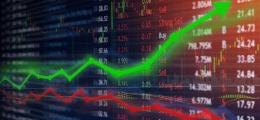|
21.05.2025 16:21:44
|
IEA sees little progress in critical minerals supply diversification, urges policy action
A new report by the International Energy Agency paints a sobering picture of the global push to secure critical minerals as nations are forced to navigate through high geopolitical tensions while supplies are dominated by only a select few players.In its Global Critical Minerals Outlook 2025, the IEA finds that despite political urgency and rising demand from clean energy technologies, diversification of the global supply chain has seen little progress.The report highlights from 2020 to 2024, global refining capacity of critical minerals became even more concentrated, with China and Indonesia accounting for the vast majority of supply growth for battery metals like cobalt, graphite and nickel. The average market share of the top three refined material suppliers rose from 82% to 86%, with single countries—China for cobalt, graphite and rare earths, and Indonesia for nickel—dominating supply increases.Credit: IEAChina’s stronghold also extends beyond just minerals refining; the Agency estimates that about two-thirds of the global battery recycling capacity growth since 2020 has been in China.The outlook to 2035 offers little relief. The IEA projects only a marginal reduction in refining concentration to 82%, effectively back to the 2020 level.Similar story in miningIEA’s outlook points to a similar trend in critical minerals mining, though to a lesser degree.While new lithium supply from countries like Argentina and Zimbabwe signals some diversification, the top three mining nations’ share of supply remains high, with copper, nickel, and cobalt expected to become even more geographically concentrated, the IEA says.Credit: IEAMoreover, some minerals are expected to be severely undersupplied despite a growing number of mine projects. Copper, in particular, presents a big concern. The current mine project pipeline points to a potential 30% supply shortfall by 2035 amid rising demand from electrification. Lithium is also expected to enter a market deficit by 2030.Supply vulnerabilityThe IEA’s findings more or less confirm China’s dominance in the critical minerals supply chain. The nation leads the refining of 19 of the 20 energy-related strategy minerals covered by its report, with an average market share of around 70%. Of those minerals, 15 have exhibited greater price volatility than oil.The report also issues a warning of the ramifications of global supply shocks, such as China’s move to restrict its exports of gallium, germanium and antimony, key minerals for semiconductor production, to the US, followed by similar curbs on tungsten, tellurium, bismuth, indium, molybdenum and seven heavy rare earth elements. The DRC also announced a four-month suspension of cobalt to curb falling prices this year.In total, 11 minerals analyzed in the report are now subject to some form of export control.Credit: IEA“Even in a well-supplied market, critical mineral supply chains can be highly vulnerable to supply shocks, be they from extreme weather, a technical failure or trade disruptions,” IEA executive director Fatih Birol said. “The impact of a supply shock can be far-reaching, bringing higher prices for consumers and reducing industrial competitiveness.”Emerging technologiesThe IEA report also spotlights emerging battery technologies—such as lithium iron phosphate (LFP), sodium-ion, and manganese-rich chemistries—that are reshaping material demand. However, these technologies are not immune to supply risks.For instance, China controls 75% of purified phosphoric acid production (crucial for LFP batteries) and 95% of high-purity manganese sulphate. Supply from announced projects is insufficient to meet projected 2030s demand, raising new vulnerability concerns, the IEA says.On the innovation front, the IEA sees promise in AI-driven mineral exploration, direct lithium extraction, and rare earth processing from ionic clays. These could cut costs and environmental impacts, opening new supply routes in countries like Uganda, Brazil and Australia. However, the report warns that without international collaboration, technological progress alone won’t ensure supply resilience.Policy action vs. market forcesThe report is blunt: market forces alone will not drive diversification. High capital costs—typically 50% higher in new jurisdictions—and low prices for critical minerals in 2024 are deterring investment, particularly from new entrants. Lithium prices, for example, plunged more than 80% after an earlier spike during 2021–22.As a result, the IEA calls for policy mechanisms to stabilize markets and reduce investor risk, such as contracts-for-difference, cap-and-floor pricing, and volume guarantees. It also recommends standards-based market access policies to promote sustainable and geopolitically diverse sources.Major economies are beginning to act. The US has issued executive orders to expedite permitting and incentivize domestic production, while the EU has designated 47 strategic projects under the Critical Raw Materials Act.At the same time, resource-rich countries such as Indonesia and the Democratic Republic of the Congo are pursuing policies to retain more value from their mineral resources through export restrictions and local content mandates.For instance, targeted incentives for cleaner nickel production could unlock sizeable supply volumes outside today’s dominant producers and reduce global market concentration by 7% by 2035, the IEA says.IEA head calls for critical minerals supply diversification“This new analysis reviews what is at stake and what needs to be done to improve the resilience and diversity of critical mineral supply chains—a key concern for ensuring the reliability, affordability and sustainability of energy in the 21st century,” Birol stated.Weiter zum vollständigen Artikel bei Mining.com
 Der finanzen.at Ratgeber für Aktien!
Der finanzen.at Ratgeber für Aktien!
Wenn Sie mehr über das Thema Aktien erfahren wollen, finden Sie in unserem Ratgeber viele interessante Artikel dazu!
Jetzt informieren!